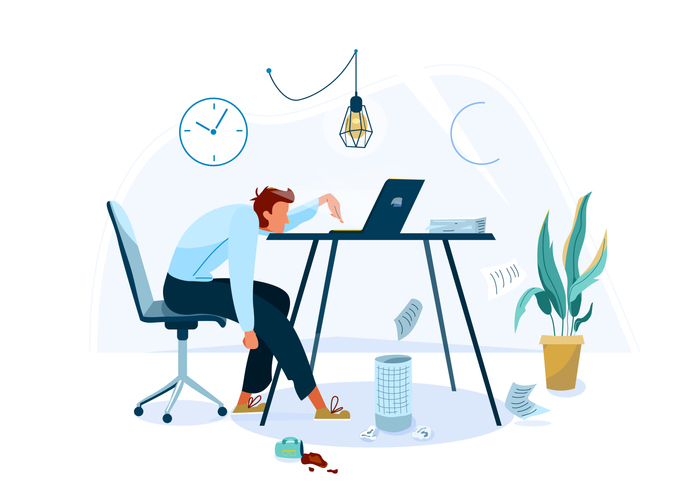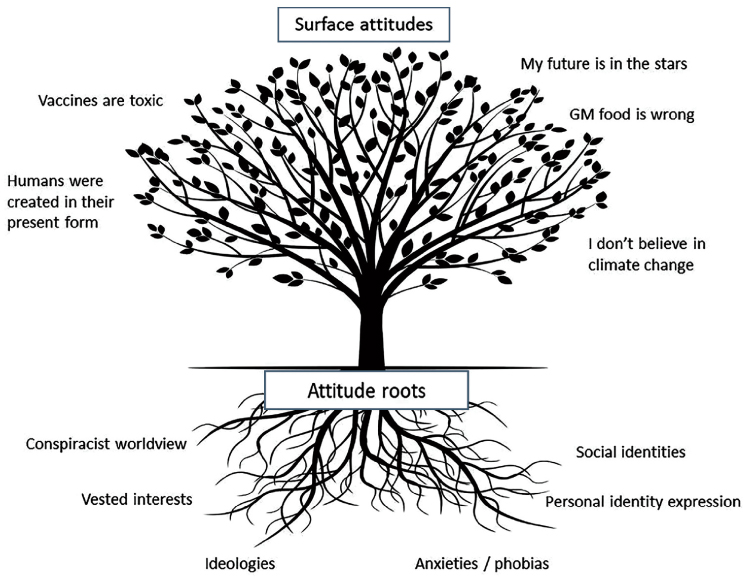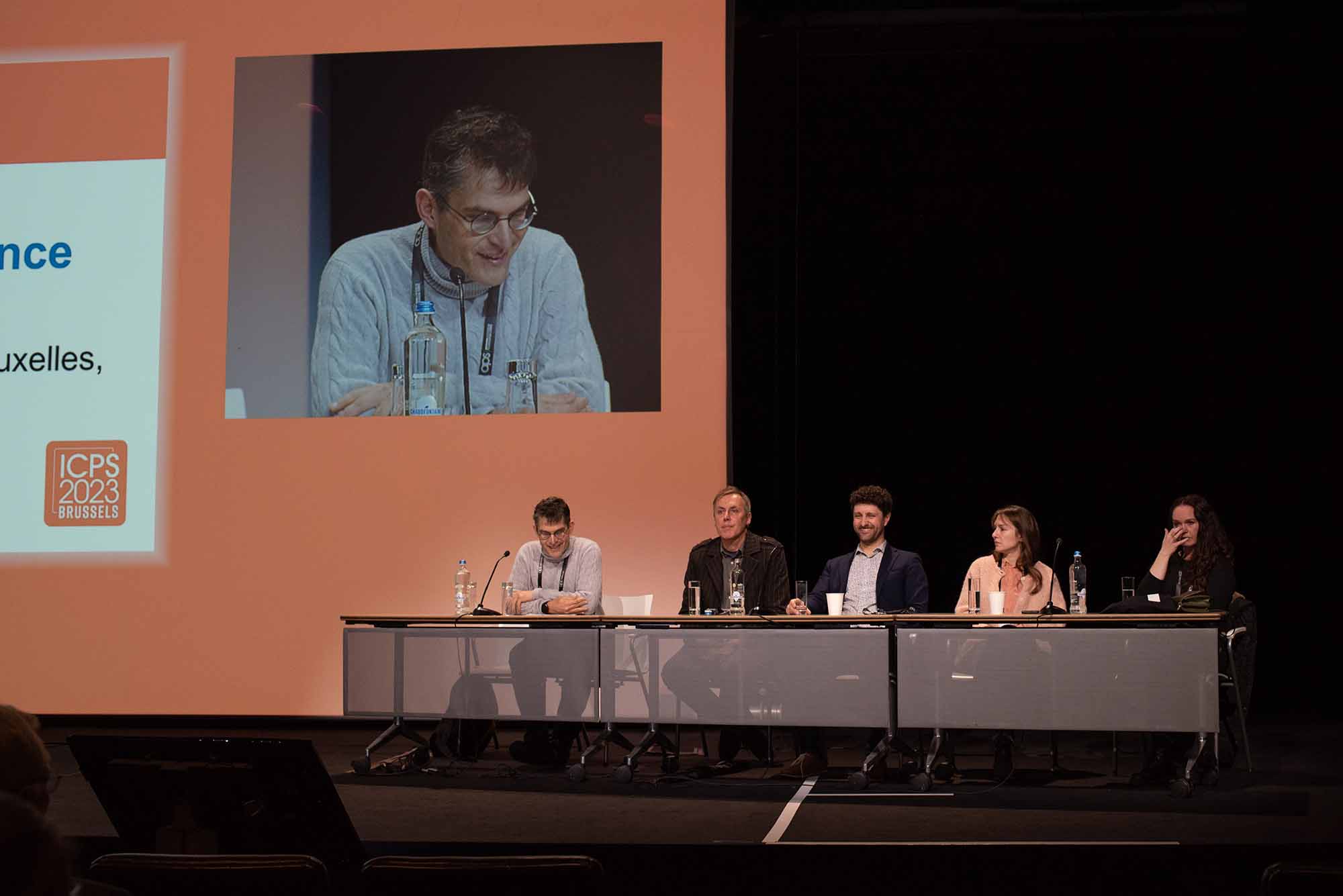Practice
Teaching: Roots of Science Denial / Benefits of Sleep

Teaching Current Directions in Psychological Science offers advice and guidance about teaching a particular area of research or topic covered in this peer-reviewed APS bimonthly journal, which features reviews covering all of scientific psychology and its applications.
Edited by C. Nathan DeWall
Resolving the Roots of Science Denial
Sleep is Good: How to Get Society to Benefit From It
Resolving the Roots of Science Denial
By C. Nathan DeWall

Why do people reject science? As scientists rush to solve a global pandemic, denying their breakthroughs can cause thousands, if not millions, of deaths. Likewise, denying scientifically supported public health recommendations increases death rates. Consider the U.S. public health response to the COVID-19 pandemic. Although the United States represents 4% of the world’s population, it has accounted for 20% of the world’s COVID-19-related deaths (Miller, 2020). Efforts to change Americans’ false COVID-19-related beliefs have largely failed. Simply telling people that their attitudes are mistaken doesn’t work. A deeper explanation and appreciation for the roots of science denial is needed.
Student Activity: Six roots of Science Denial
This activity will involve student pairs choosing a surface attitude (see Figure 1). Students may also explore surface attitudes related to the COVID-19 pandemic, such as believing that influential people intentionally planned the coronavirus outbreak (Schaeffer, 2020). Depending on class size and available time, instructors can ask student pairs to discuss each attitude root or have teams discuss only one attitude root. This activity will work
in both face-to-face and virtual teaching environments.
Download the complete set of questions here.
Sample Questions
- How might a given attitude root affect people’s perceptions of scientific findings related to your chosen surface attitude?
- Using a search engine or social media, can you find some examples of how that attitude root might relate to your chosen surface attitude?
- How might your understanding of the roots of science denial
help you understand a person who holds this attitude root? - See this article online at psychologicalscience.org/observer/teaching-current-directions-denial-sleep for more questions on Hornsey’s work in PowerPoint form for classroom use.
Matthew Hornsey offers a solution to science denial that goes beyond force-feeding people scientific facts. People often hold on to their mistaken beliefs despite having high levels of education and scientific literacy (Drummond & Fischoff, 2017). What is more useful, Hornsey argues, involves considering the roots of science denial that gave rise to people’s mistaken beliefs. Using a tree metaphor, Hornsey identifies six roots of science denial that must be addressed before lasting attitude change is possible: conspiracist worldview, vested interests, ideologies, anxieties/phobias, personal identity expression, and social identities.
Science denial can be a difficult topic to discuss, mainly because psychology students typically accept the scientific method. But Hornsey’s theoretical model can help even the most earnest student understand why people may struggle to separate empirical fact from fiction.
We live in the golden age of science. Embracing science has helped usher in the safest, healthiest, and most prosperous period in human history (Pinker, 2018). Two global pandemics separated by a century—the 1918 H1N1 pandemic and the COVID-19 pandemic—have had vastly different outcomes because of progress in reason and science, allowing effective vaccines to be developed in record time. Such progress was made possible by understanding and removing the roots of science denial. Having an open mind and a compassionate heart can help psychological scientists interact with people who deny scientific information by considering not only what they believe but why.
References
Drummond, C., & Fischhoff, B. (2017). Individuals with greater science literacy and education have more polarized beliefs on controversial science topics. Proceedings of the National Academy of Sciences, USA, 114, 9587–9592.
Miller, B. L. (2020). Science denial and COVID conspiracy theories. Journal of the American Medical Association, 324(22), 2255–2256.
Pinker, S. (2020). Enlightenment now: The case for reason, science, humanism, and progress. Viking.
Schaeffer, K. (2020, July 24). A look at the Americans who believe there is some truth to the conspiracy theory that COVID-19 was planned. Fact Tank. Pew Research Center. https://pewrsr.ch/3f1dgPo
Sleep is Good: How to Get Society to Benefit From It
By Michael Scullin and Cindi May
When thirsty, we drink water. When hungry, we eat food. When sleepy, we watch Netflix, drink caffeine, scroll through social media, or do just about anything except sleep. Since the industrial age, sleep has become the only biological need that people routinely (try to) ignore.
Student Activity: Sleep Hygiene Challenge
As a class activity, invite your students to take part in a “sleep hygiene challenge.”
Encourage them to adopt one new sleep hygiene behavior tonight and maintain that behavior throughout the week. If they wish to make their pledge public (e.g., by posting to social media), they can use the tool at SleepIsGood.com.
In the next class, invite students to share which sleep hygiene habit they adopted and whether they believe it helped them study more effectively that week. You might even compare their overall performance to that of previous classes that did not take the challenge.
Skeptical that students can change their sleep habits, or that doing so can improve their test performance? Consider the following results. During finals week, students were offered extra credit if they improved their sleep habits relative to an early-semester baseline. Students improved their sleep from 6.98 to 8.17 hours per night, and the more they improved their sleep, the better they did on their final exam (Scullin, 2019).
Sleep loss permeates our society. In the United States, approximately half of teenagers and college students fail to sleep even 7 hours per night (Scullin, 2019; Twenge et al., 2020). Sleep just isn’t high on their priority list. But it’s not just society’s youth who dismiss sleep. Policymakers defend school start times that require teenagers to wake before sunrise. Medical residents take on-call work at night and then work the entire next day. Nearly every workplace leaves the impression that sleep is idle time being wasted (Barnes & Drake, 2015).
Sleep science suggests differently. Lab-based, experimental sleep research makes two things clear: Sleep loss makes life worse, and it makes you worse at life. Let us explain.
- Sleep is good for mental health; without it, we are moodier, show greater racial/ethnic biases, are more prone to anxiety, and experience more suicidal ideation (Simon et al., 2020).
- Sleep is good for physical health; without it, we are more prone to respiratory infections, we perform worse athletically, and our Instagram selfies are rated as less attractive (Montgomery-Downs, 2020).
- Sleep is good for brain health; without it, our frontoparietal attention network is weakened, we aggregate more amyloid plaques, and we have difficulty encoding and retaining memories (Feld & Born, 2020).
Gordon Feld and Susanne Diekelmann want students—and the rest of society—to take note. Sleep matters. And it’s not just the quantity of sleep, but also the quality. According to them, sleep quality can be improved, and doing so will result in immediate benefits, including remembering more from the previous day.
Feld and Diekelmann note that brain stimulation can augment specific brain waves during sleep, such as the slow oscillations during slow-wave sleep. Those slow oscillations, which are generated in the neocortex, coordinate the reactivation and consolidation of memories in the hippocampus (Diekelmann & Born, 2010). Therefore, if one can increase slow oscillations, one can also improve retention of memories encoded the previous day. One such technique is known as “closed-loop auditory stimulation.” The participant sleeps while wearing an electroencephalogram (EEG) cap, and when slow oscillations are detected, a brief auditory click is played. These clicks increase the size and “trains” (groupings) of slow oscillations (Ngo et al., 2013). Your students can watch a video of this technique at tinyurl.com/SleepStimulation.
The problem, of course, is that effective brain stimulation requires expensive equipment. Consumer devices exist, but Feld and Diekelmann caution that such devices have not been independently validated. Thus, there is a gap between what sleep science is showing in the laboratory and how people can benefit in the real world.
Feld and Diekelmann propose that we bridge sleep science findings to everyday settings by using targeted memory reactivation and improving sleep hygiene practices.
Targeted memory reactivation, commonly shortened to TMR, is like learning while you sleep. To take advantage, students need to pair their studying with a distinct sensory cue, such as a rose scent or music (Rasch et al., 2007). The key is to re-present that sensory cue during sleep, particularly slow-wave sleep (30–60 minutes after falling asleep). In one experiment, students who learned vocabulary while smelling an incense stick showed improved memory for the vocabulary the next day if they slept with the incense stick near their bed (Neumann et al., 2020). In another experiment, students who studied microeconomics while listening to classical music showed improved test performance the next day if they listened to the same classical music while they slept (Gao et al., 2020). As a class activity, ask students what other distinct sensory cues they might pair with studying and how they might re-present that stimulus during slow-wave sleep at home the night before their big test.
With all the fancy neuroscience gadgets available, it’s easy to forget that the quickest and most “battle-tested” way to improve sleep is through behavioral change. People can improve their sleep quality by improving their sleep hygiene practices. Here are some examples:
- Go to bed and wake up at the same time every day. (Yes, even on weekends!)
- Avoid caffeine after 5 p.m.
- Disconnect from your screens at least 30 minutes before bedtime.
- Relax by writing down your worries and making a to-do list.
- Optimize your room with dark curtains, white noise, and a cool temperature.
Let’s do a better job of listening to our biological drives. When we are thirsty, let’s drink water. When we are hungry, let’s eat healthy food. And, for goodness sake, when we are sleepy, let’s sleep.
References
Barnes, C. M., & Drake, C. L. (2015). Prioritizing sleep health: Public health policy recommendations. Perspectives on Psychological Science, 10(6), 733–737.
Diekelmann, S., & Born, J. (2010). The memory function of sleep. Nature Reviews Neuroscience, 11(2), 114–126.
Feld, G. B., & Born, J. (2020). Neurochemical mechanisms for memory processing during sleep: Basic findings in humans and neuropsychiatric implications. Neuropsychopharmacology, 45(1), 31–44.
Gao, C., Fillmore, P., & Scullin, M. K. (2020). Classical music, educational learning, and slow wave sleep: A targeted memory reactivation experiment. Neurobiology of Learning and Memory, 171, Article 107206.
Montgomery-Downs, H. (Ed.). (2020). Sleep science. Oxford University Press.
Ngo, H. V. V., Martinetz, T., Born, J., & Mölle, M. (2013). Auditory closed-loop stimulation of the sleep slow oscillation enhances memory. Neuron, 78(3), 545–553.
Neumann, F., Oberhauser, V., & Kornmeier, J. (2020). How odor cues help to optimize learning during sleep in a real life-setting. Scientific Reports, 10, Article 1227.
Rasch, B., Buchel, C., Gais, S., and Born, J. (2007). Odor cues during slow-wave sleep prompt declarative memory consolidation. Science, 315(5817), 1426–1429.
Scullin, M. K. (2019). The eight hour sleep challenge during final exams week. Teaching of Psychology, 46(1), 55–63.
Simon, E. B., Vallat, R., Barnes, C. M., & Walker, M. P. (2020). Sleep loss and the socio-emotional brain. Trends in Cognitive Sciences, 24(6), 435–450.
Twenge, J. M., Coyne, S. M., Carroll, J. S., & Wilcox, W. B. (2020). Teens in quarantine: Mental health, screen time, and family connection. Institute for Family Studies and Wheatley Institution. https://ifstudies.org/ifs-admin/resources/final-teenquarantine2020.pdf




